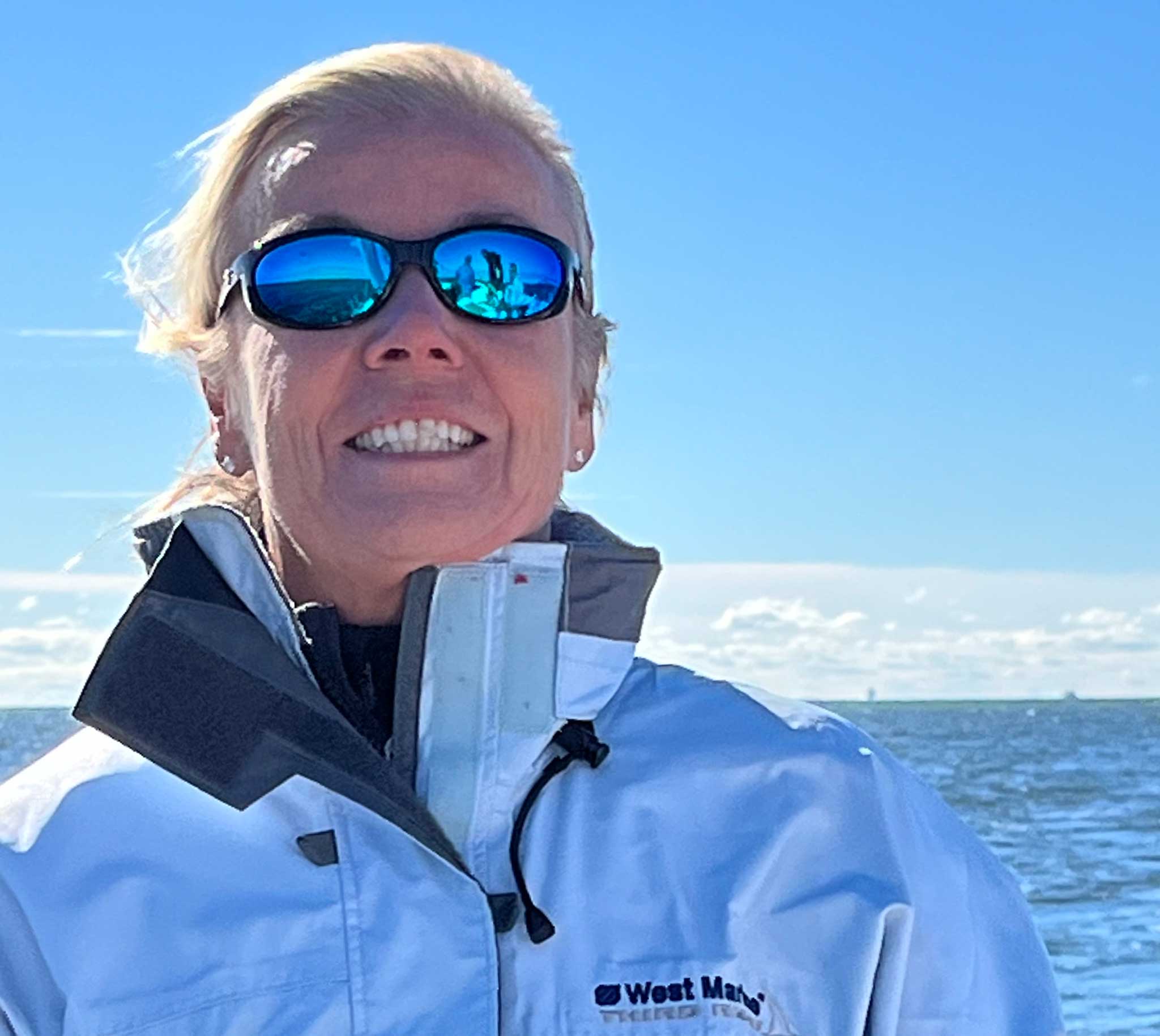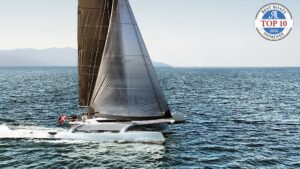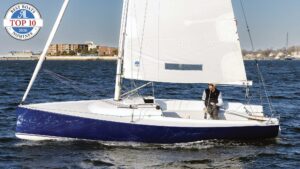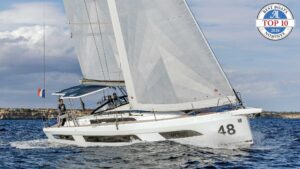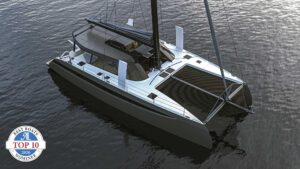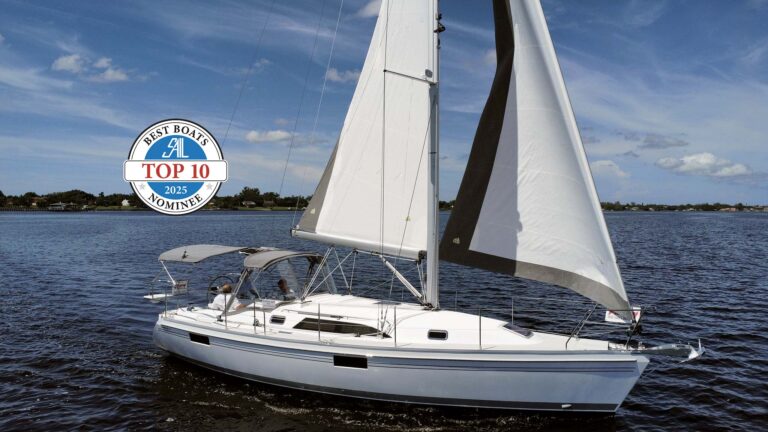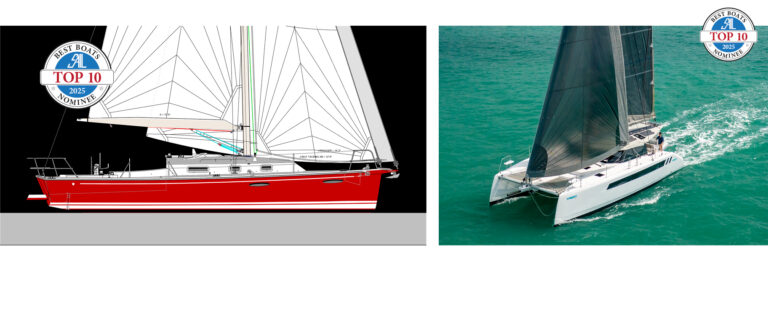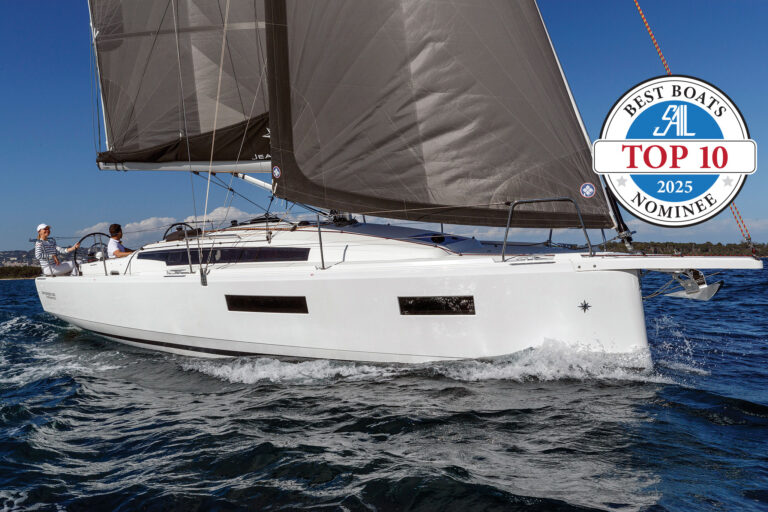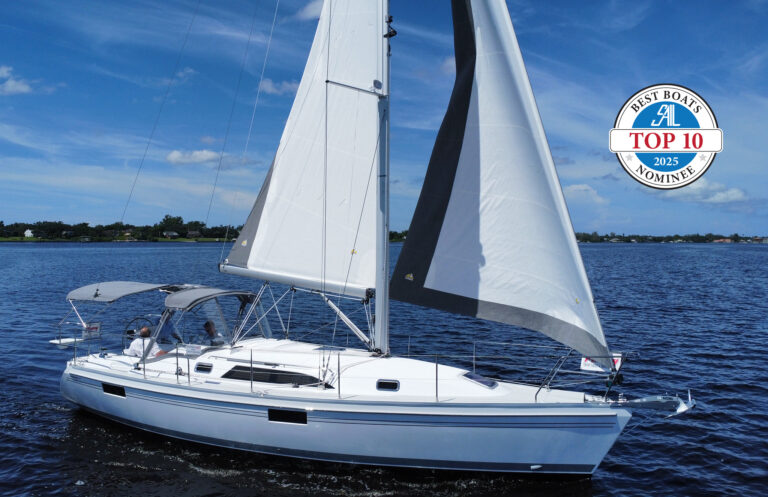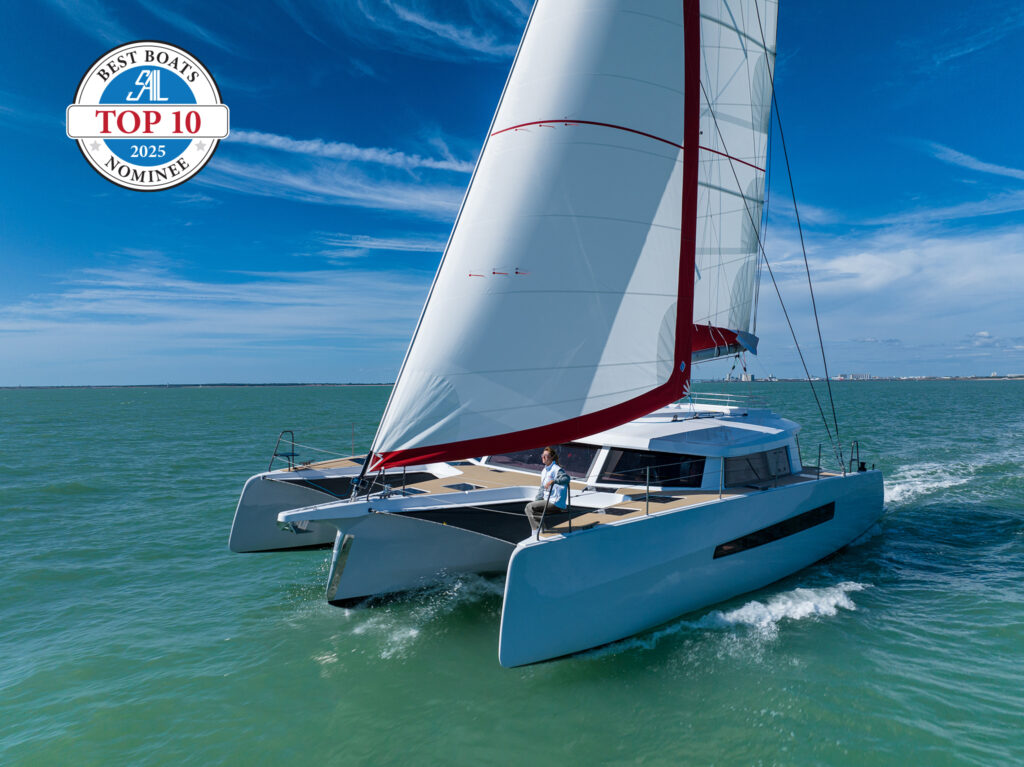I stepped aboard the NEEL 52 after the Miami Boat Show and met owner Oliver Liddell in the galley as he was making a chardonnay and orange juice cocktail. It had been a long day for both of us. He was ready to relax, and I was ready to beg for one more test ride. I put on my most plaintive expression and he relented, setting aside his drink and pressing the young team from Miami’s Performance Yacht Sales into action.
This latest Marc Lombard design replaces the popular NEEL 51 of which around 40 hulls were built, so it has much to live up to. It also comes on the heels of SAIL’s 2023 Top Ten Best Boats winner, the NEEL 43. The 52 is sleeker than her predecessor with more modern lines, more interior light, and an improved cockpit layout, but none of these came at the expense of performance, as I soon found out.
We headed out in the late afternoon having missed some glorious 20-knot winds, but we still tapped into 12 to 14 knots over a 2- to 3-foot chop. The large swell from earlier had lay down so there was little chance for surfing downwind. Instead, the sun came out low in the sky for a beautiful and mellow sail.

With the code zero in 14 knots true, we settled into a comfortable beam reach at 11 knots of boat speed. When we pinched up to 40 degrees AWA, we still held onto 9 knots. And this is where trimarans shine over cats. They point higher than catamarans and they reduce wetted surface by lifting the windward ama even in a light breeze. And even with the ama flying, the boat stays stable and level unlike a heeling monohull.
Had the wind been stronger, we’d probably have reached 11 knots at 30 degrees as Liddell reported having done earlier. In any case, the boat was unbothered by any of our shenanigans as we tacked and jibed. Once set on a course, she slipped along like a Cadillac with a 1,500-square-foot surface area.
From the raised helm on the starboard bulkhead, it can be tricky to see the opposite bow, but overall visibility is good forward and aft and sightlines down the starboard side are excellent for docking. There’s plenty of room for a driver and a line handler working the three electric winches forward. To port and a few steps up, there’s a faux flybridge with an elevated lounge and an L-shaped settee. This space works as companion seating to the helm or as the perfect hangout for happy hour.

The central hull now has a deeper rocker or bottom curvature for improved agility when close-quarters maneuvering and a 6-foot, 3-inch draft for better pointing ability. The vacuum-infused sandwich construction is cored with foam rather than balsa and has triaxial fiber reinforcements in heavy load areas. She’s over a ton lighter than her shorter predecessor. Owners have a choice of a carbon or aluminum spar that manages a large square-top mainsail and nearly 1,800 square feet of total upwind sail area. The carbon rig adds about 2 feet to the air draft.
The deck and cabinhouse are massive and when viewed from above form what looks like a circle with twin trampolines forward and three swim platforms protruding aft. The cockpit is spacious too, just like on a cat. The straight-line dinette stretches along the entire port side with part of it inside and forward of the glass doors and part of it outside in the cockpit itself. With the doors open, the table is joined and can seat 12 for dinner. To starboard is a massive playpen lounge, and next to that Liddell specced a custom feature that included a large outdoor galley and wet bar. You’d be hard pressed to find a bigger entertainment module in most backyards.
 Courtesy of NEEL Trimarans
Courtesy of NEEL TrimaransThe central hull has an integrated dinghy cradle to carry an 11-foot Highfield tender with a 20-hp outboard. The tender is lifted onto the swim platform with the end of the boom, eliminating lifts or the expensive and heavy components of a hydraulic platform.
Inside, the flow is reminiscent of a condo. The salon is to port and the owner’s suite is on the same level to starboard. Our test boat had the bed on the main deck and the head and office down in the starboard ama. Sleeping at deck level is nice for air circulation and if you need to dash out of bed for quick middle-of-the-night anchor check.

As with the NEEL 43, this owner’s cabin has windows facing the salon, and when the blinds are up, visibility is clear across the boat, bringing even more light and sense of spaciousness to the cabin. For privacy, close the blinds and the cabin is cozier.
The forward-facing navigation station is offset slightly to port and is well-equipped. A mullion interrupts the sightlines, but you can lean to one side or the other for a clear view, and with all the electronics and autopilot at your fingertips, you can do much of the driving from inside fully protected from the elements.
An angled walkway leads to the galley which sits just ahead of the owner’s cabin. It rivals the cooking space in most homes in terms of the sophistication of the appliances and acres of countertop space. It also wins for best views of any kitchen from its vantage point in the starboard forward corner.
Between the galley and the nav desk are steps down into what would normally be a double cabin, but that’s where it became obvious that our test boat was uniquely tricked out with systems designed for long-term self-sufficiency. On the way down, I noticed another cabin forward, but it was mostly used for storage. Remember that the NEEL 52 can be specced with three to six cabins, so losing one or two still leaves plenty, and that’s not even counting the two crew cabins that can be shoehorned into the aft ends of the amas.
Aft, on this lower level, I found a complete systems room with a large bank of lithium batteries fed by the 2,600 watts of glued-on solar panels above and the 13.5 kW generator. A watermaker and a washer/dryer were also installed, as was an Integrel high-performance alternator mounted on the 110-hp Yanmar diesel engine that cruised at 2,500 rpm and 9.5 knots. The systems are mix of 12, 24 and 48 volts so you’d best have more than a layman’s understanding of power generation and storage to feel comfortable here.
With vast headroom throughout, as well as ample room for a workbench, extra stowage for spares, AC units, and easily accessed additional equipment, this technical and storage space surpasses anything similar on a multihull or monohull, and the accessibility it offers for systems and maintenance is outstanding.
Trimarans are making significant strides into the upmarket cruising community. Their large, stable, cat-like platforms combine with the pointing ability of a monohull making three hulls a go-to choice more often. Liddell had originally bought hull No. 35 of the NEEL 51, but it suffered a “fatal blow” during its launch in La Rochelle. That’s how he transitioned to the NEEL 52, the first production hull after the prototype, and he seems happy with the turn of events.
Born in the Bahamas and now a retired attorney, Liddell named his boat Tie Me Loose, perhaps a Bahamian play on words meaning “untie me.” That’s apropos for a boat with big cruising aspirations and abilities. Liddell plans to live aboard as he travels, hence all the systems to enhance autonomy at anchor. It’s certainly a comfortable home but also one that reels off the knots with ease. And it’s the perfect setting to enjoy some white wine and orange juice, which I can now say I’ve tried, and it, like this trimaran, isn’t too hard to take.

LOA 52’0”
Beam 28’10”
Draft 6’3”
Air draft 79’0” (aluminum) 81’ (carbon)
Displacement 29,762 lbs
Sail Area 1,786 sq ft (aluminum mast)
Power 110-hp Yanmar diesel
Designer Marc Lombard Yacht Design
Builder NEEL Trimarans/neel-trimarans.com
Price well-equipped $1.5 million


